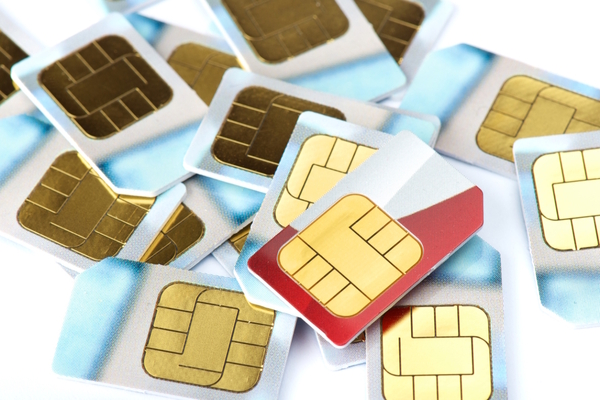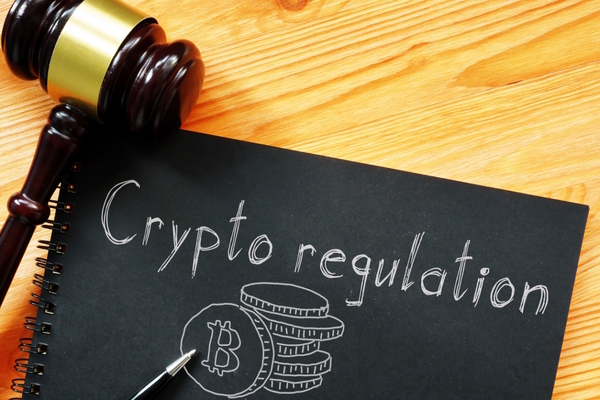Stablecoins are fuelling payments innovation: are you ready?
The race for supremacy between stablecoins, tokenised deposits and real-time payments is accelerating innovation in payments. Philip Bruno at ACI Worldwide argues that the real debate is not about which technology will “win,” but how they can co-exist to give customers and businesses what they want most: reliability, stability and choice

It’s no exaggeration to say that stablecoins have become the hottest topic in payments – and for good reason. According to a recent McKinsey report, circulation has doubled in the last 18 months, and the passing of the GENIUS Act, the first US federal framework for payment stablecoins, and MiCA in the EU, have marked a clear turning point.
With clearer rules in place, digital‑asset rails are moving from fringe potential to mainstream usage. For consumers and businesses, that means the prospect of faster, cheaper and more flexible payments – whether domestic or across borders. For financial institutions, it signals that the competitive landscape has shifted dramatically.
That shift is shaping up as a three-horse race: stablecoins, offering programmability and low-cost settlement; tokenised deposits, bringing those benefits within regulated bank balance sheets; and real-time payments, modernised by ISO 20022 and proven at scale. Each has advantages and limitations, and together they’re driving change across the payments ecosystem.
As with any race, one question hangs heavy in the air: which horse is the best one to back?
The pros and cons of different payment types
The most logical approach to answering this is to weigh the pros and cons of each payment type, starting with stablecoins. It’s private digital money usually collateralised by the dollar or other fiat currency. They’re designed to remain stable – hence the name – in value while still moving on blockchain rails. This makes them both familiar in denomination and revolutionary in use. Programmability makes them unique in the ability to offer conditional payments, escrow or collateral for decentralised Finance (DiFi) applications.
Take cross-border payments, for example. Stablecoins can offer significant advantages, particularly for thinly traded or unstable currencies: Settlement in minutes rather than days and transaction costs that can be reduced by as much as 80% compared with traditional banking corridors. We’re already seeing this play out. Private firms across Africa are using stablecoins to pay foreign suppliers quickly and reliably, without waiting on fragile local banking systems. PayPal is also allowing users to send stablecoins overseas without being restricted by “traditional banking hours” or facing expensive intermediary fees. It’s, therefore, no wonder that financial institutions are taking an interest.
When considering tokenised deposits, while they share much of the technical DNA of stablecoins, they operate within the safeguards of the regulated banking system. They’re essentially digital representations of bank deposits issued on a blockchain. This means that while they carry the benefits of programmability, speed and transparency, they are collateralised by the deposits in bank accounts and remain on a bank’s balance sheet and are subject to the same oversight as traditional deposits. This makes them less vulnerable to some of the systemic risks that accompany privately issued stablecoins.
Of course, momentum in this space is building, with the likes of Deutsche Bank announcing efforts to modernise its global payments operations with tokenised deposits. In essence, tokenised deposits offer a “best of both worlds” proposition: the innovation of blockchain combined with the compliance rules, protection and trust of the banking sector.
And then there are real-time payments (RTP). They may not carry the same novelty as blockchain-based solutions, but they’re a cornerstone of modern payment innovation. Real-time rails and systems are tried, tested and widely trusted, and in recent years, they’ve been improved significantly through the global rollout of the ISO 20022 messaging standard. There are increasing efforts to create cross-border interoperability between the RTP systems of different countries (e.g., India/Singapore, Nexus multi-country initiative).
But its biggest draw of real-time payments is how they are boosting financial inclusion. In fact, a recent ACI Worldwide report shows a “positive empirical link between real-time payments and financial inclusion,” suggesting they have the potential to lift millions of people out of poverty. The associated financial inclusion uplift experienced by many countries, as a result of increasing real-time transactions, presents significant new revenue opportunities for financial institutions.
Every rail has its risks…
So, each has its strengths. But they also have limitations. And for all their promise, stablecoins still face structural and systemic challenges. At some point, users almost always need to convert digital tokens back into fiat currency, and depending on the jurisdiction, that process can be anything from clunky to highly restrictive.
But the larger risks lie in the structure of stablecoins themselves. Because private companies, rather than banks, issue them, stablecoins sit outside general banking safeguards. Deposits held in stablecoins don’t support lending in the wider economy, and if funds were to flow en masse out of banks, the result could be a liquidity squeeze with real economic consequences. Additionally, the widespread use of dollar-backed stablecoins could accelerate “dollarisation” in other markets, undermining local currencies and potentially destabilising the global payments system.
The convenience of stablecoins, therefore, raises a bigger question: are we comfortable handing control of money – and by extension parts of the economy – to private issuers in the same way we ceded control of personal data to big tech platforms?
And what about tokenised deposits? Yes, they may be safer than stablecoins, but they remain tied to individual bank balance sheets, so they’re constrained by the same national and institutional boundaries as conventional deposits. Interoperability is the central challenge here: a tokenised deposit issued by one bank often cannot move seamlessly to another, and there’s no global standard to govern how they should work across borders either.
This fragmentation undermines their potential for broader interoperability, and it’s why we’re seeing institutions consider different technologies. Their reliance on traditional banking infrastructure also prevents true 24/7 operation, unlike public blockchains, which run continuously.
On the other hand, real-time payments remain vital, but they also carry their own drawbacks. They’re not blockchain-based and therefore lack features such as programmable settlement and instant global reach. Instead, they rely on existing infrastructure that can be fragmented across jurisdictions and relatively expensive for institutions to operate.
These costs and complexities are one reason why stablecoins have gained momentum in the first place. Even with ISO 20022 enriching transaction data and improving interoperability, real-time systems still depend on a chain of intermediaries, adding friction to transactions. In some cases, fees for real-time payments transfers often remain higher than those offered by digital asset rails, particularly in cross-border scenarios.
Recognising these limitations is critical. No single payment type offers a complete solution on its own. Each payment type brings compelling strengths, but also meaningful limitations. For that reason, backing just one would be a strategic mistake.
Having a strategy for all payment types
The real debate is not about which technology will “win,” but how they can co-exist and provide options by use case to give customers and businesses what they want most – reliability, stability and, more importantly, choice. Think of cash: even as digital payments rise, it remains a key payment method in Europe, with more than half (52%) of all POS transactions last year paid in cash. In the US, more than 90% of all consumers intend to use cash as a means of payment or store of value in the future. Put simply, one form doesn’t disappear when another rises; people and businesses value choice. And the system works best when those options can sit side by side.
For financial institutions, this means stepping away from a single-rail mindset and instead building strategies that treat all three payment types as complementary tools. None of them alone can deliver a complete solution – but together, they can.
This is where interoperability becomes critical. If institutions can orchestrate across these different rails – choosing in real-time the optimal path for each transaction, based on cost, regulation and customer need – they can transform payments from a patchwork of competing systems into a seamless, resilient network.
More importantly, this kind of orchestration doesn’t just add efficiency: it future-proofs the system. New forms of digital money can be integrated as they emerge, making sure that payments remain inclusive, accessible and adaptable to both domestic and global needs. Experience already shows how widening payment choice can strengthen economic participation and financial inclusion, and that same dynamic will apply as digital money options continue to grow. It’s this broader vision that must guide strategy.
Shaping the future of payments
The payments landscape is evolving rapidly, and institutions that move first will set the pace. By integrating stablecoins, tokenised deposits and real-time payments into a coherent strategy now, banks can unlock everything from lower costs in cross-border transactions to entirely new revenue opportunities.
One thing is certain: the payments landscape is becoming more complex with the addition of new, and often more complex, payment methods/types. Banks will need to manage this complexity and, importantly, simplify the usage and UI for their customers.
At the same time, a cautious, balanced approach is essential. Stablecoins remain in a grey zone of regulation. But history shows how quickly that can change. Take AI: it emerged with few rules in place and came with widespread uncertainty, yet within a few short years, it became a trusted part of mainstream business. Stablecoins are likely to follow the same path as safeguards catch up. This makes it vital to view the future not as a choice between one rail or another, but as an opportunity to combine the best of each.
Therefore, building readiness now – through flexible infrastructure and orchestration capabilities – will give institutions the advantage when that moment arrives. After all, the future of payments won’t be defined by one rail, but by the ability to orchestrate across many.
Philip Bruno is Chief Strategist and Global Growth Officer at ACI Worldwide
Main image courtesy of iStockPhoto.com and inkoly

Business Reporter Team
Most Viewed
Winston House, 3rd Floor, Units 306-309, 2-4 Dollis Park, London, N3 1HF
23-29 Hendon Lane, London, N3 1RT
020 8349 4363
© 2025, Lyonsdown Limited. Business Reporter® is a registered trademark of Lyonsdown Ltd. VAT registration number: 830519543





